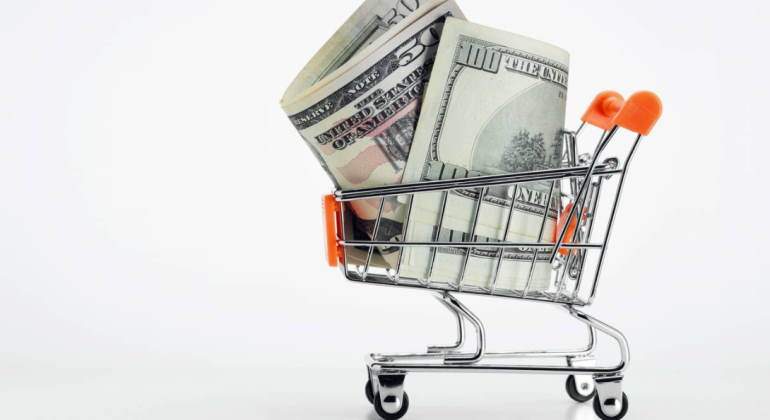Inflation does not give truce in the US: the CPI reaches 5.4% in June and the underlying reaches its maximum of 1991. Core inflation reaches 4.5%, highs not seen in three decades. Second-hand car and truck prices continue to skyrocket.
Inflation does not find a ceiling in the US. Experts had predicted a slight respite in June, but nothing could be further from the truth. The general CPI (the entire basket) has risen again to stand at 5.4% (maximum since 2008), while the underlying (not counting energy or fresh food) has reached 4.5%, maximum since 1991, about three decades.
The market expected the inflation data to moderate to 4.9% year-on-year, given the slight break in global food prices (according to FAO) and a lower base effect (compared to the stagnant prices of 2020) . But the truth is that the CPI has risen again strongly, derailing all forecasts and fueling the arguments of Fed members who call for a prompt withdrawal of stimulus .
The economy is growing at the fastest rate in years, while interest rates and massive bond purchases stimulate consumption and investment. On the other hand, the Government has deployed an expansive fiscal policy (more public spending, benefits and direct aid) that is unprecedented, which is also giving new strength to domestic demand and investment.
Asset prices rise, generating a wealth effect that encourages consumption by families that think they are richer. The risk of overheating in the US exists and proof of this is the rise in prices for the seventh consecutive month.
In recent times, the inflation data has become one of the most anticipated by analysts, investors and the press itself. After years of little movement, prices seem to have awakened intensely from their slumber. Now we will have to wait to decipher if this is the beginning of a new era or just a temporary rebound in inflation.
From the Nordic bank SEB they comment that expectations spoke of a slowdown in the CPI in June compared to April and May, however “the rate was going to remain high compared to the trend prior to the pandemic.” Finally, inflation has again taken another leap and has stood at 5.4% year-on-year, with a rise of 0.9% per month (compared to the 0.4% expected), data much higher than what is expected. I expected.
Different types of effects related to the pandemic continue to affect inflation. The US Employment Office reveals that the used car and truck price index continued to grow sharply, rising 10.5% in June (monthly, a real madness).
This increase accounted for more than a third of the increase for all seasonally adjusted items. The food index has rebounded 0.8% in June, while the energy index has risen 1.5% in June, and the gasoline index increased 2.5% during the month.
Core inflation is at 30-year highs
“The underlying trend in prices is difficult to interpret with forces pulling in slightly different directions. After all, the important thing is whether high inflation is here to stay or whether it is temporary,” say SEB experts.
For now, underlying or core inflation stood at 4.5% year-on-year in June, the highest since the end of 1991. This inflation is more reliable by eliminating the most volatile components from the basket, such as energy or food without process.
This rise in the underlying CPI is a reflection of the bottlenecks in the supply chains (semiconductor chips, raw materials …) that are generating a shortage of some goods and skyrocketing the price of others (second-hand cars and trucks, whose demand increases as chip shortages slow the production of first-hand chips).
Until May, energy has played a very important role in this base effect, since oil fell to historical lows during April and May 2020, so when making the year-on-year comparison with this 2021 (crude prices have recovered ), the rates of change were staggering. Now, this impact should start to diminish unless oil rises at an even higher rate .
Inflation is clearly exceeding the Fed’s 2% target. However, the latest modification in its mandate allows this type of episodes to occur for a time to compensate for periods of low inflation, such as the year 2020. This gives the Federal Reserve scope to keep interest rates at the same rate.
0% and its bond purchase program even though prices continue to far exceed its long-term goal of 2%. The question is how long the Fed will sit still or how far it can let inflation rise (albeit temporarily) before taking action.
